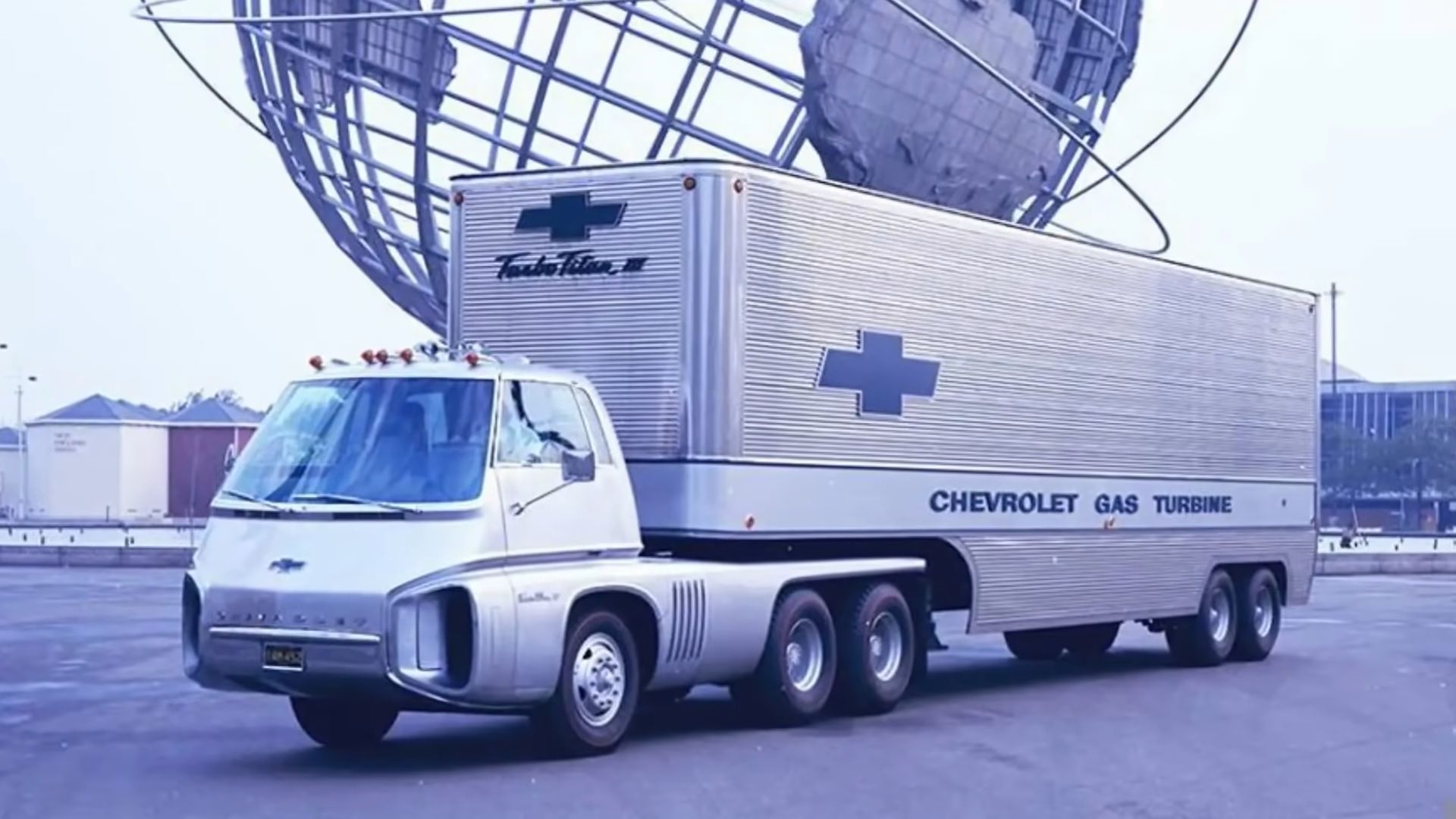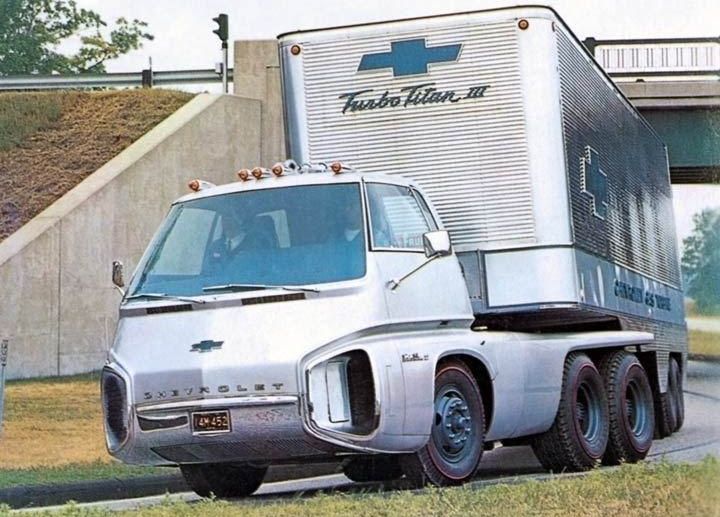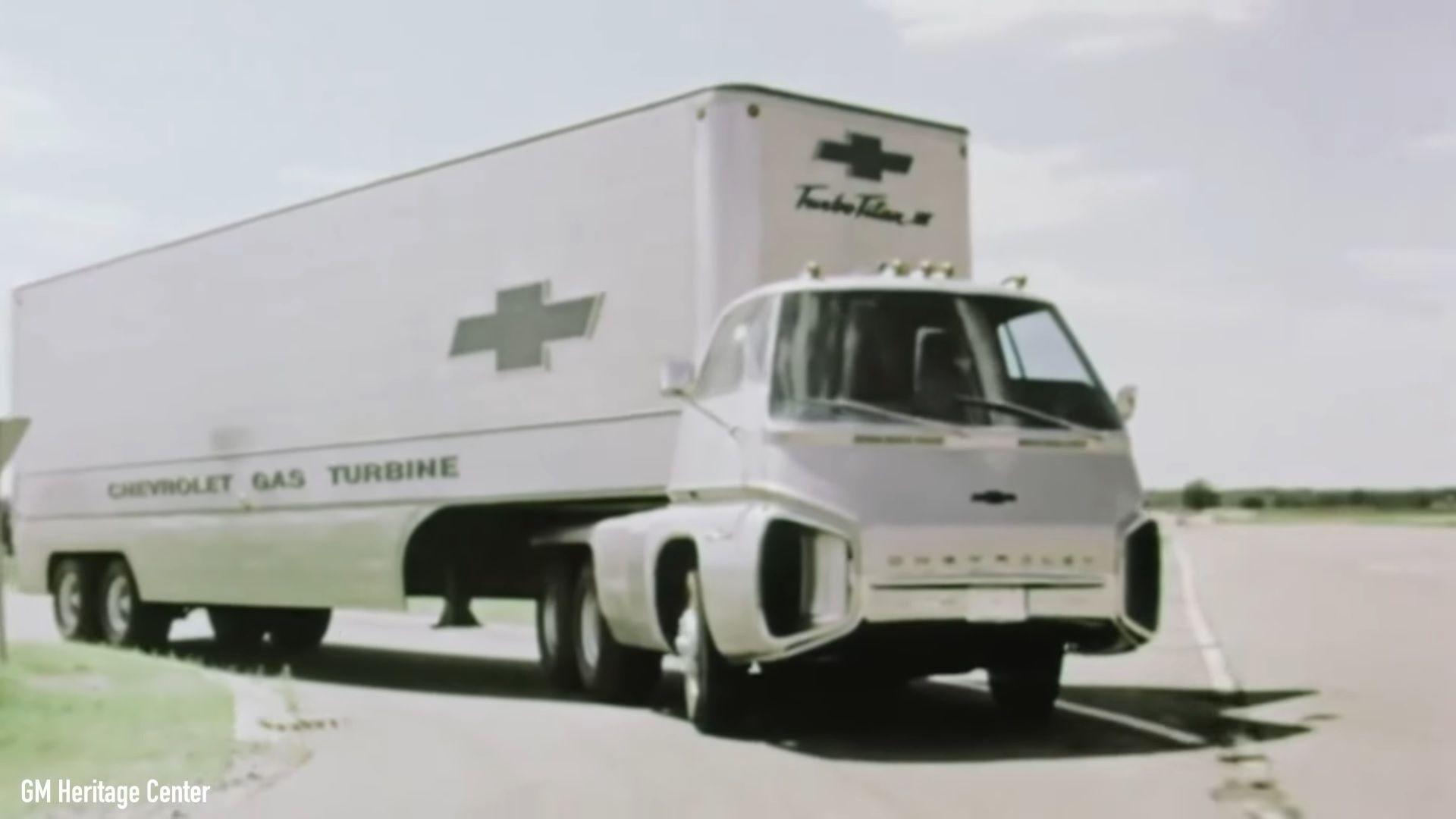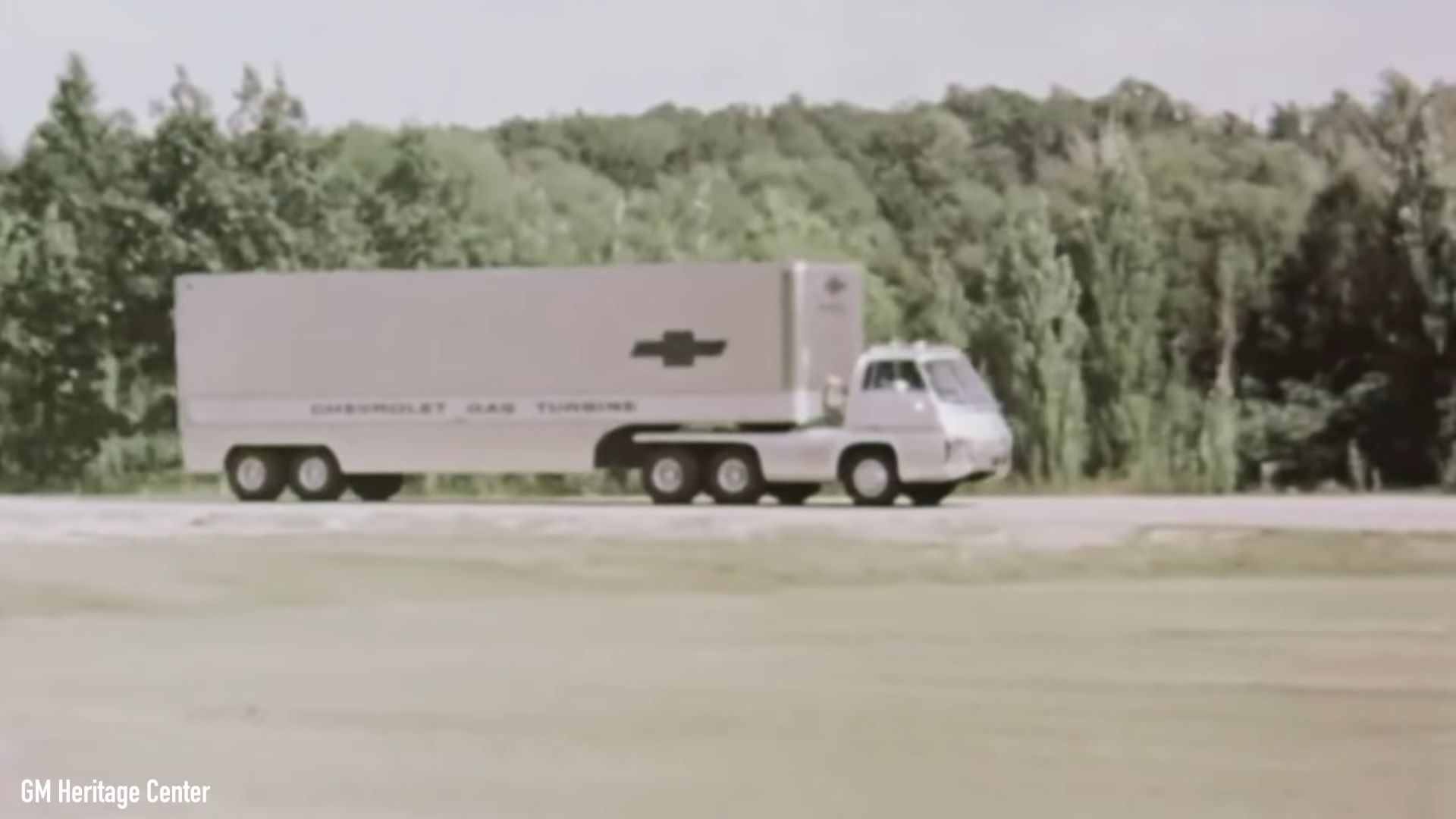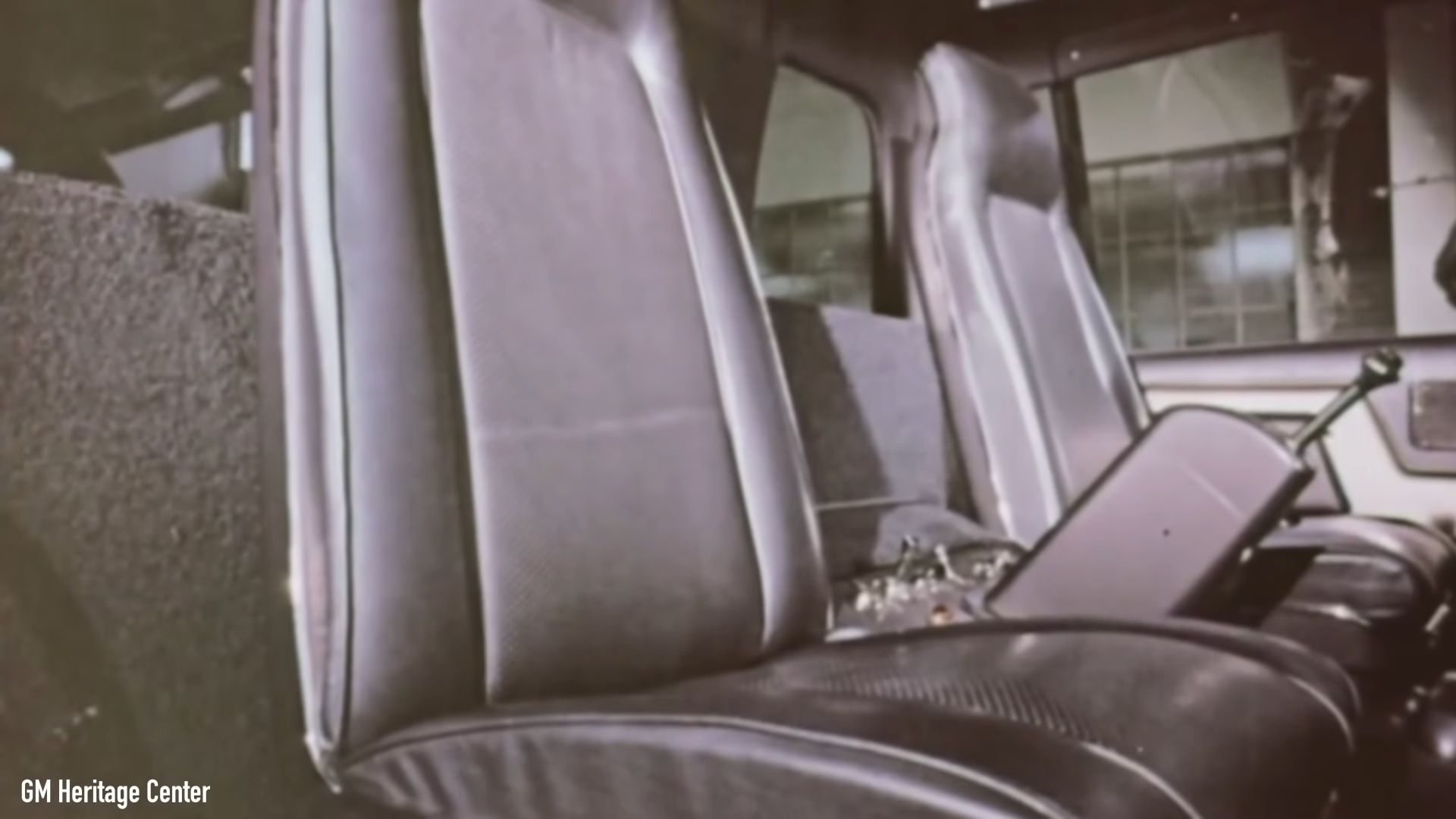With the latest and greatest in gas turbine engine technology, lateral pop-out headlights, and the weirdness of twin-dial steering, the Turbo Titan III was Chevrolet’s attempt at creating the truck of the future. But with Ford’s own Big Red promotional gas turbine truck already roaming the growing Interstate Highway system, what did Chevy bring new to the table of experimental big rigs?
Well, keep reading to find out how one of the coolest-named trucks ever made was built to revolutionize the way America hauled cargo around the country, how it came THIS CLOSE to becoming a series-production rig, and how it disappeared without a trace.
So let’s try to unravel the mystery and learn some new stuff along the way.
New Highways Influenced New Heavy Haulers
It’s the 1960s, and America’s Interstate Highway System is rapidly expanding across the country, connecting East to West and North to South like never before. So evidently, the automotive Big Three start planning for the so-called ‘roads of tomorrow’ with futuristic vehicles set in motion by the power of gas turbines. They sounded cool, and they felt like Tomorrowland was closer than ever before. Coincidentally, the first gas turbine vehicle to capture the public’s attention - the 1963 Chrysler Turbine car - began its public testing program less than a year after the first season of The Jetsons stopped airing.
And so what was previously only seen and imagined in cartoons, was now available to the public, albeit in limited numbers.
Gas Turbine Engines Date Back To The 50s
In reality though, gas turbine engine development began much earlier, in 1946, when the British started working on the Rover JET1. On the other side of the pond, engineers didn’t waste much time either, and by the start of the 50s, the first gas turbine prototypes emerged in America. Fast forward to 1964, and imagine yourself at the New York World’s Fair. It’s packed with people looking to discover novelties like the computer modem, electric toothbrush, and cool new vehicles - like the first-generation Ford Mustang and the never-before seen Ford Big Red turbine truck.
Now, if you want to know more about Big Red, I have a separate story detailing its fascinating history.. But suffice it to say - it was massive and, even more impressive, it worked. Not to be outdone by the Blue Oval, General Motors went all out at the World’s Fair with the Futurama II exhibit, which showed what life might be like in the near future. And the future had a turbine truck in it, obviously.
Chevy’s First Heavy Hauler Was a Big Flop
Named the Bison, it featured at least one of GM’s GT-309 turbine engines sitting in a streamlined pot above the doorless cab. Details about this particular prototype are very hard to come by, with some reports suggesting that the engine was going to be combined with some sort of electric generator and another turbine motor of mysterious origins.
Technical details aside, though, it was a pretty interesting thing, but ultimately it paled in comparison to Ford’s double offering and, more to the point, it didn’t even run - it was just a non-functional prototype made to promote GM’s standardized shipping container at the time.
But the story’s not over.
And as a quick fun fact to tie this whole story together, I’m going to tell you that one of the people involved in the planning of the Interstate Highway System was also the head of General Motors at one point.
Charles Erwin Wilson, nicknamed ‘Engine Charlie’, was still running GM when the Federal Aid Highway Act was being drafted, and in 1953 he became Secretary of Defense under President Eisenhower.
Introducing the Chevy Turbo Titan III – Designed By the Same Guy That Led The Corvette Stingray Project
Ok, so like I said earlier, GM’s turbine truck story wasn’t over. Two years after its subpar performance with the gas-powered prop in 1964, General Motors revealed something that was completely operational and ready to take America by storm, even if for a brief period of time.
Designed by Bill Mitchell, the man who oversaw the design of the Corvette Stingray concept, the Chevrolet Turbo Titan III was powered by the really cool-sounding ‘Whirlfire Turbo Power Engine’, essentially the same as in the Bison prototype, but this time it was working, and making a total of 280 horsepower and a massive 875 pound-feet of torque.
And like most turbine engines, it had an idle speed of around 33,000 rpm, which is ridiculously high when compared to a regular gasoline engine, but pretty usual for a gas turbine. However, this presented a problem when trying to connect to a gearbox in order to transfer power to the wheels.
So GM’s engineers used a reduction gear to lower the output idle to 4,000 rpm and then connected a modified Allison MT-42 manually-shifted, automatic gearbox. And all of this without a torque converter.
Because the output shaft of the engine was not fixed to the initial compressor stage, it meant the output turbine itself could act like a sort of fluid coupling - pretty neat.
And by now you probably noticed the occasional lack of headlights and side markers. Well, that’s because the Turbo Titan had pop-out headlights and indicators, as well as an electrically-operated tilt-lift cab.
Moreover, the big scoops where the headlights were nestled in were actually functional, with air flowing through them towards the turbine.
It Was the Coolest Truck of the Time
Inside, there were amenities like an FM radio, two astronaut seats, carpets, and twin-dial steering. This was the biggest novelty of them all - because, let’s face it, carpets aren’t really something you should be proud of in a so-called ‘truck of the future’.
Nobody really knows why GM used this contraption, but just like with Ford’s own Wrist-Twist, I get the feeling that it was just the cool thing to do at the time. With a fiberglass and steel construction, a custom, 40 feet stainless steel box trailer, and a Gross Vehicle Weight of 76,800 pounds, the Turbo Titan show truck was reportedly driven coast to coast several times, with GM advertising calling it “The Chevrolet Way”.
And with GM’s last iteration of the gas turbine engine - the GT-309, it had the same fuel efficiency as a diesel semi when cruising at 65 miles per hour. Outside this narrow comparison window though, it quickly became less and less efficient.
Final Thoughts
I really like the way the Turbo Titan III looked, and most of all, I really like the names that were used to describe it. But in the end, it was an inferior product when compared to Ford’s Big Red. The Blue Oval’s own gas turbine prototype made more power - 600 horsepower, to be exact -, it was much bigger and had cooler features like an integrated kitchen and bathroom. Plus, you had to use a retractable ladder to get in and out - which was simply a showstopper.
Nonetheless, it was clear that things were moving in the right direction with the new and exciting technology of gas turbine engines. But with the Clean Air Act coming in and heavily regulating emissions shortly after these trucks were presented to the public, it all came crumbling down fast. By the end of the 1960s, both the Chevrolet Turbo Titan III and Ford Big Red were retired. But while Ford’s turbine truck is still shining under the roof of a private collector, nobody knows what happened to Chevy’s truck - not even General Motors, according to an article on TheDrive.com.
Judging by the way these concepts usually end up, the Turbo Titan III is probably gone forever, crushed or destroyed in another way, considering it’s never been seen in a museum or collection since its heyday. And with the Titan gone from the public eye, GM’s turbine truck dream was gone for good, while Ford continued developing the technology into the 1970s. It must have been a fascinating time, with hopes running high for the cool, but really uneconomical gas turbine movement.
Tear-shedding moments aside, what are your thoughts on the Chevy Turbo Titan III? Would it have been a good long-haul truck if events were to unfold differently? Let me know in the comments below.

